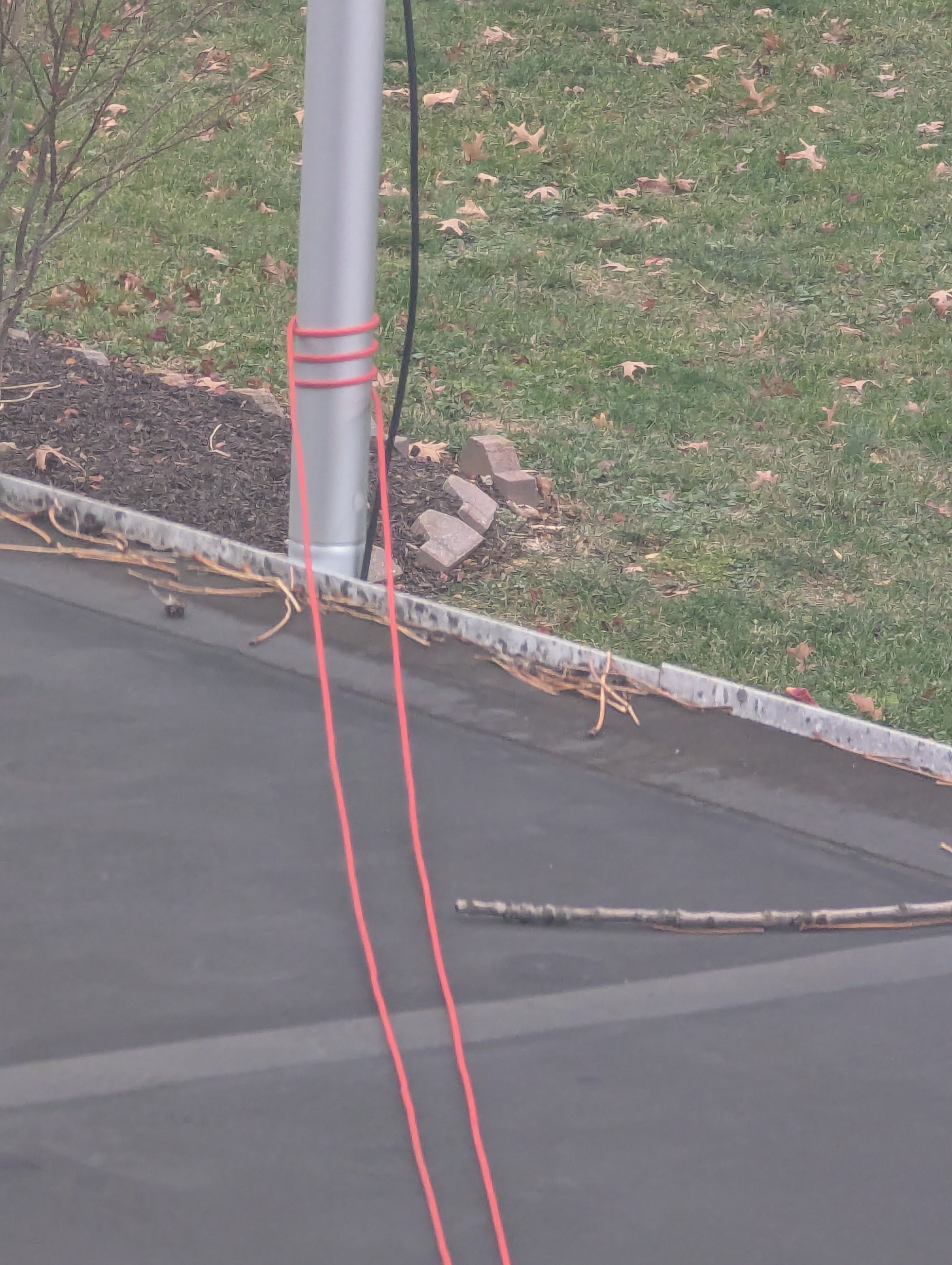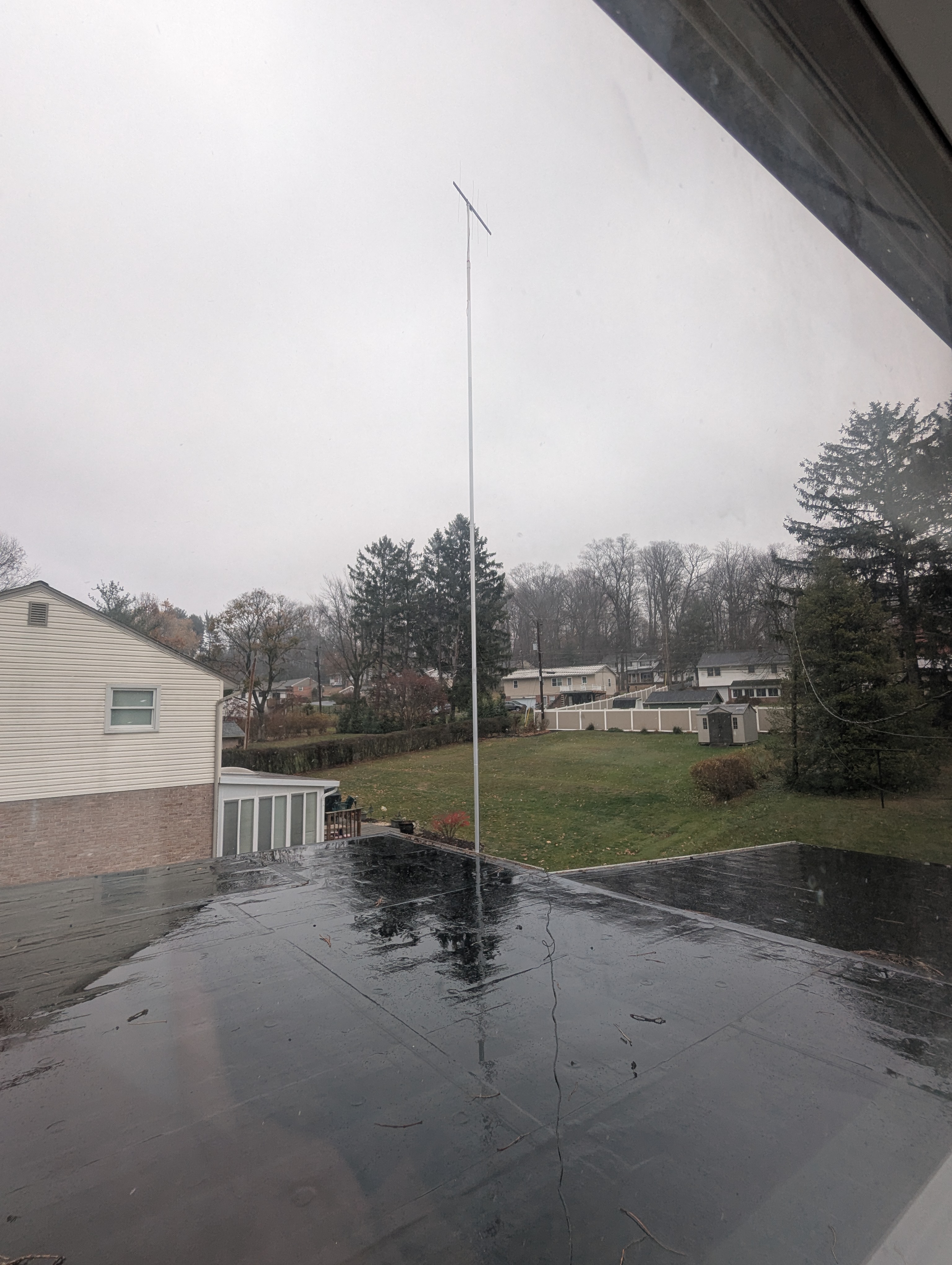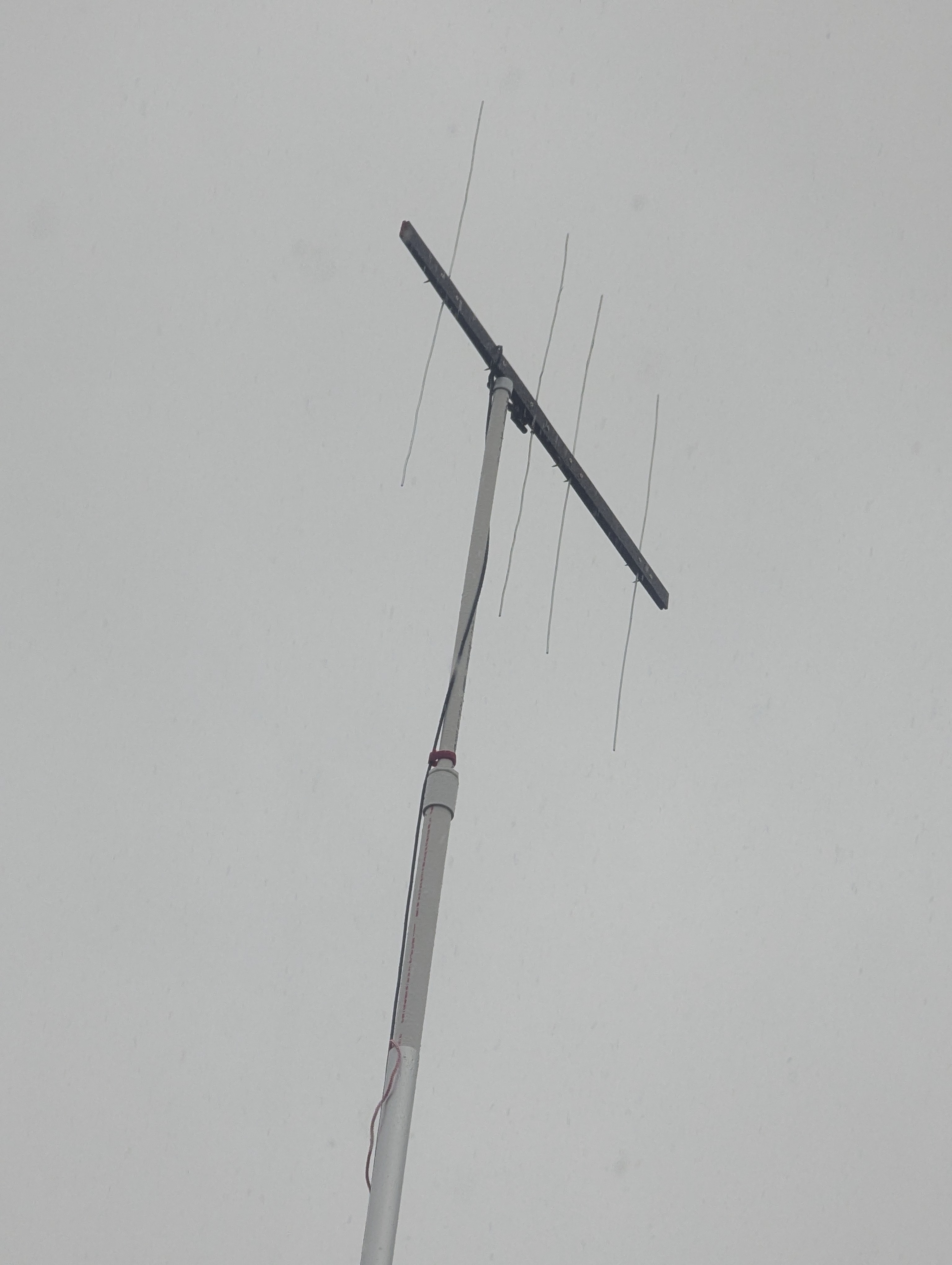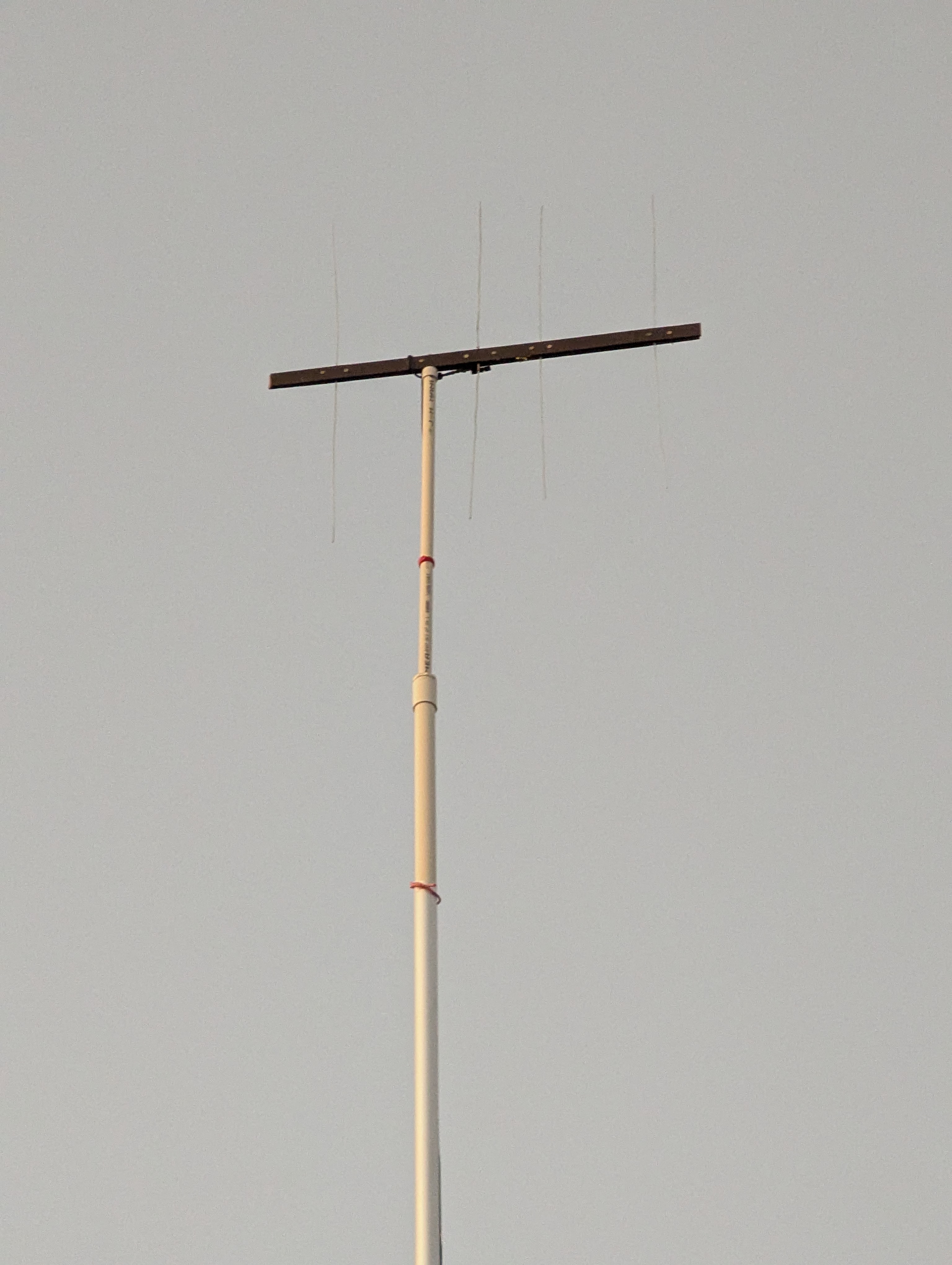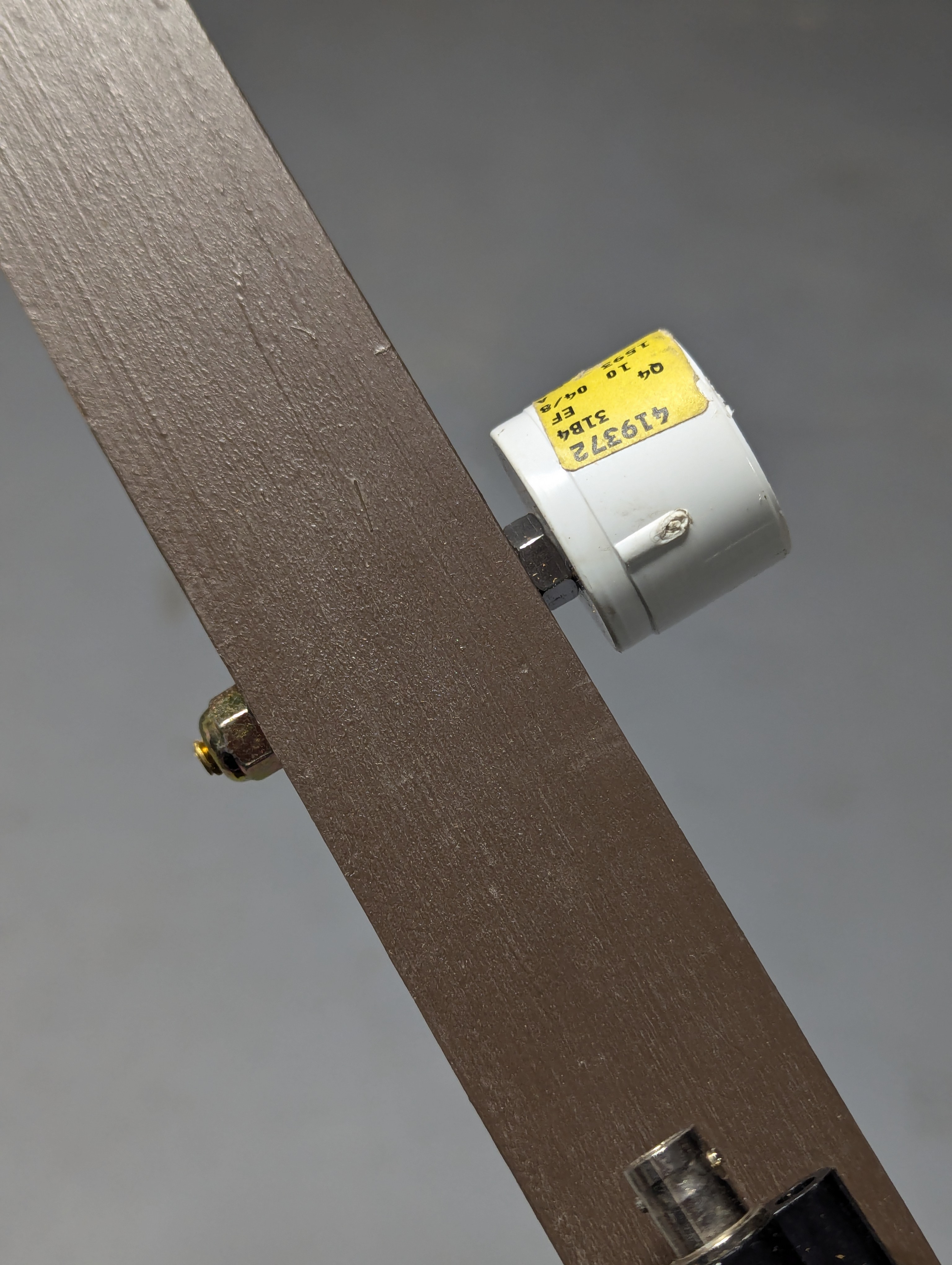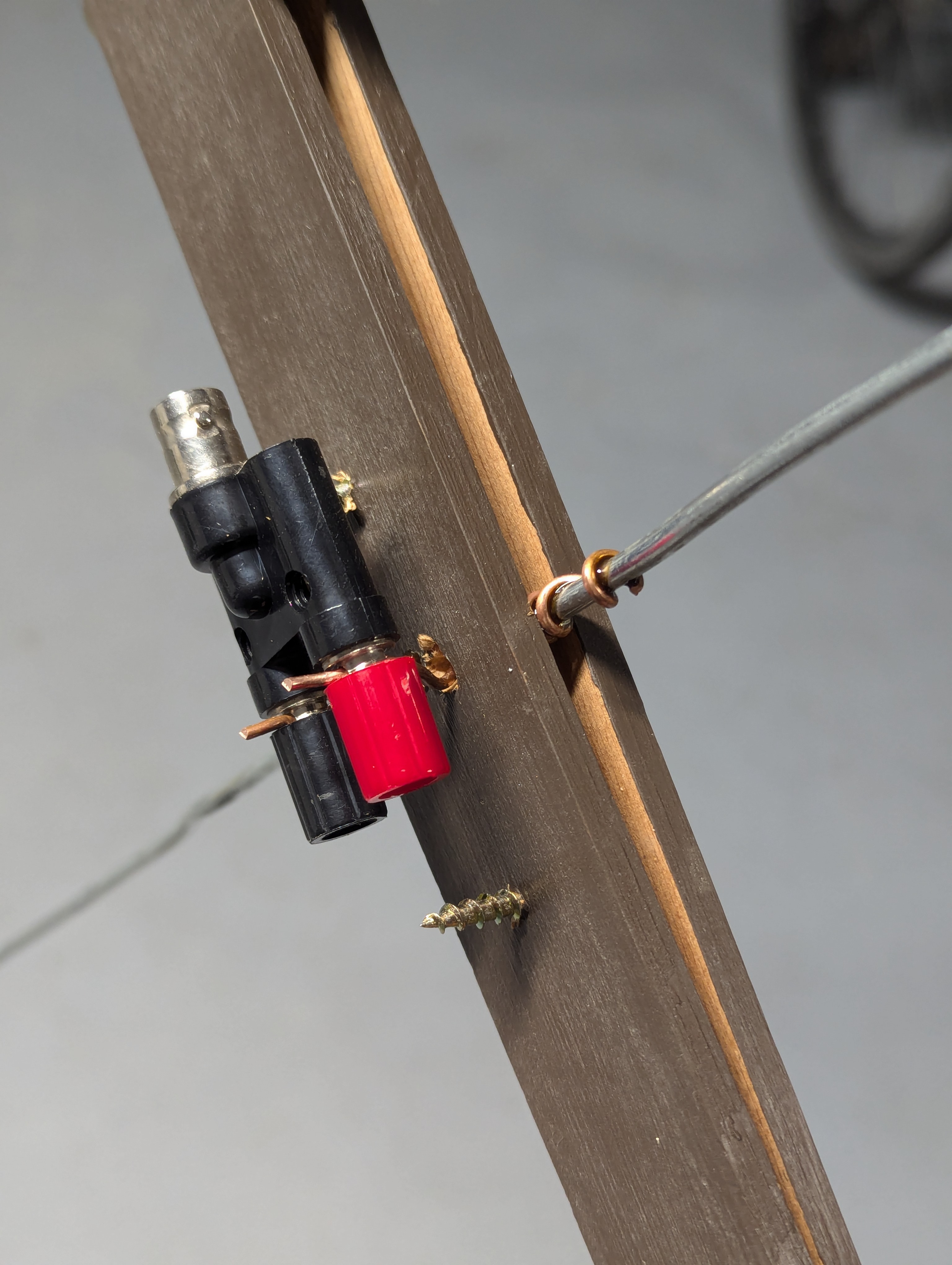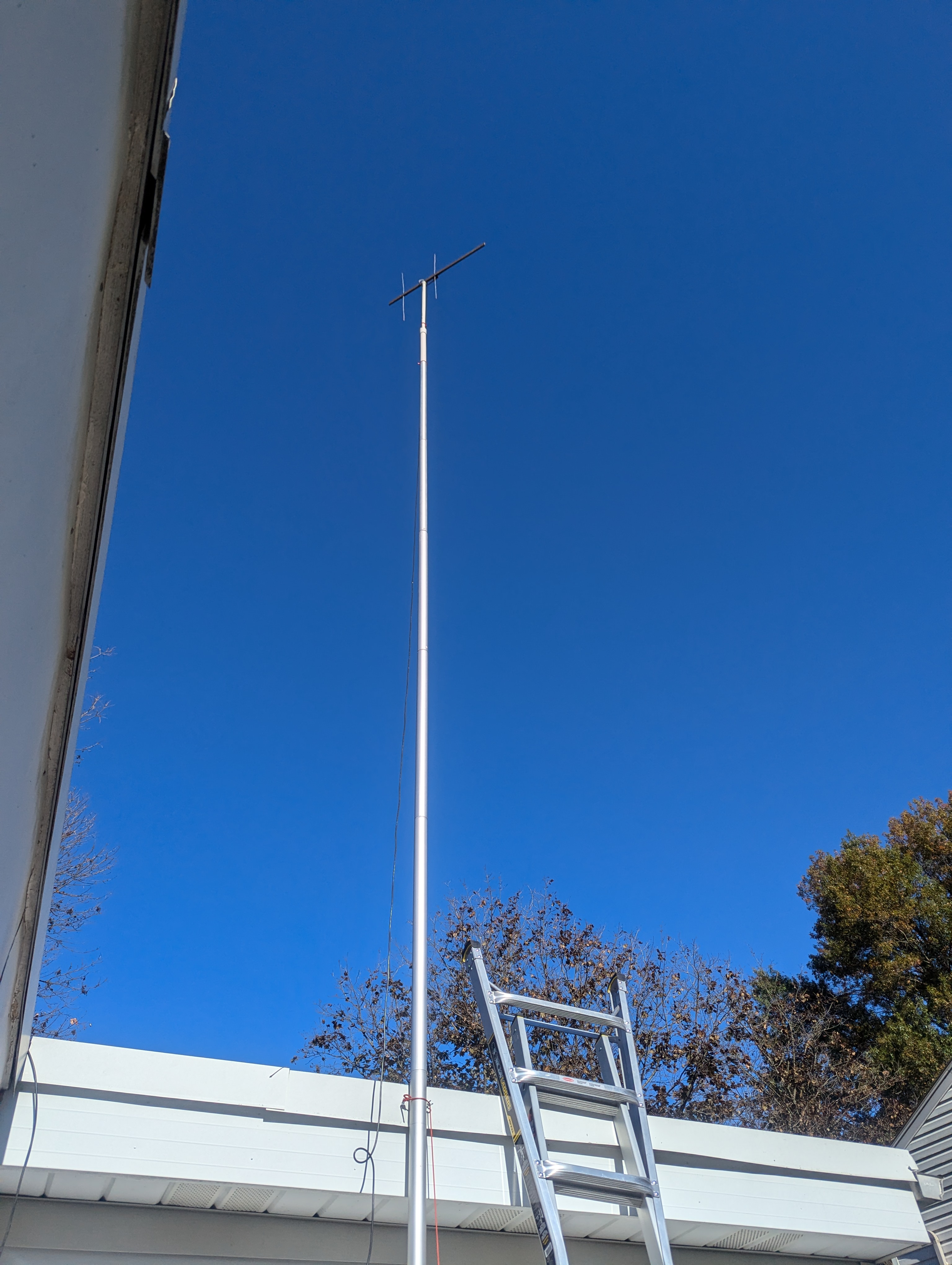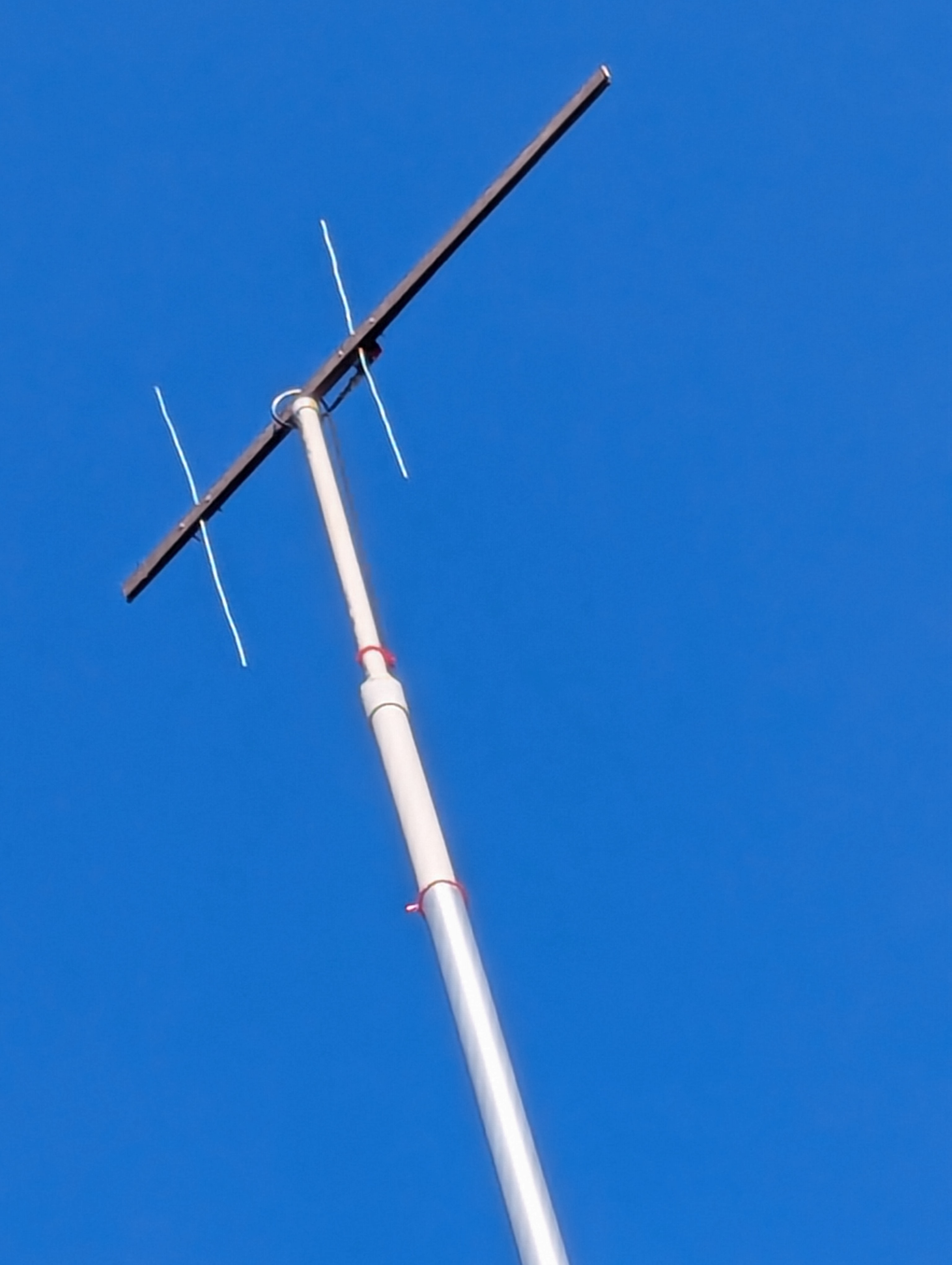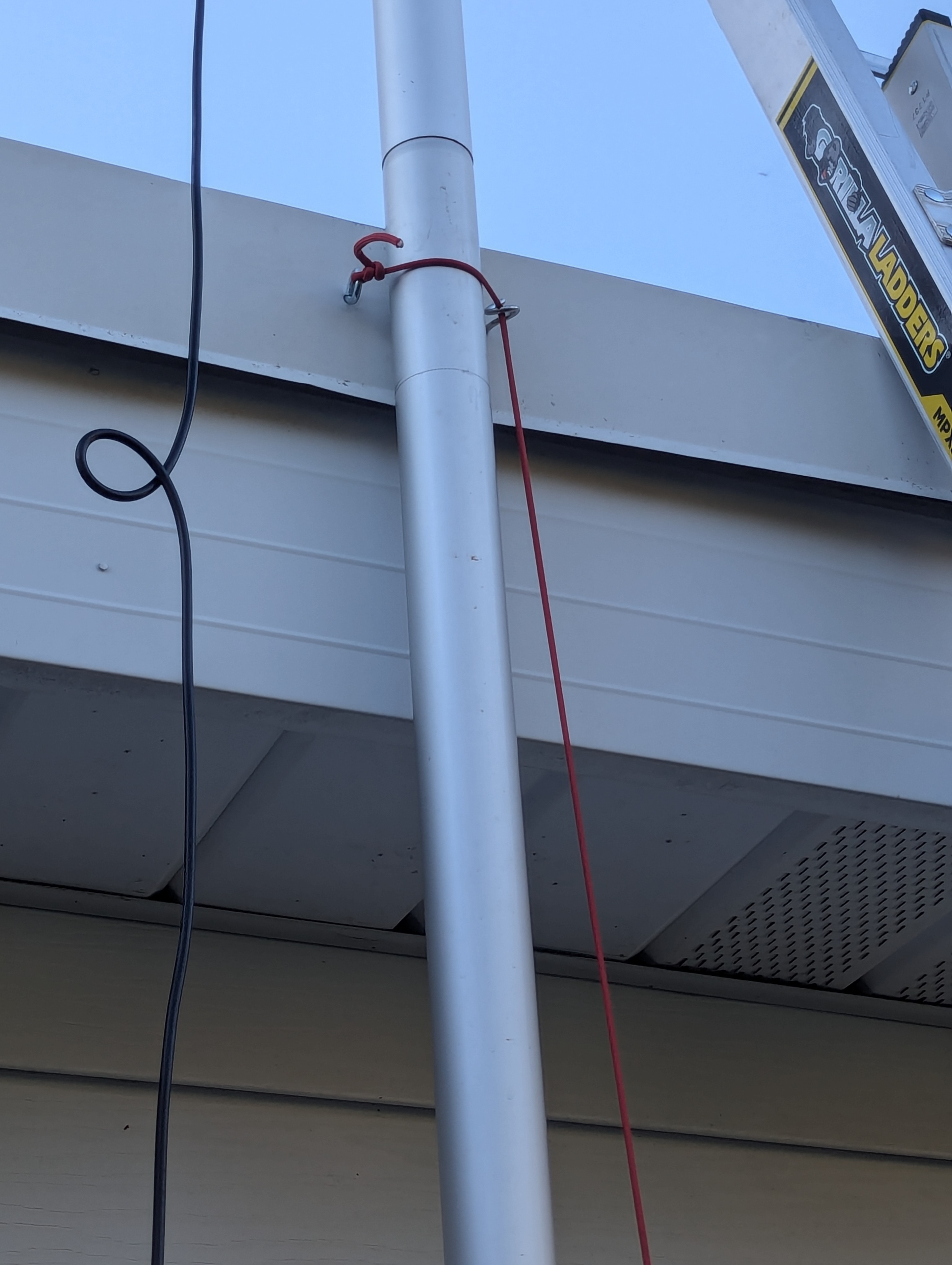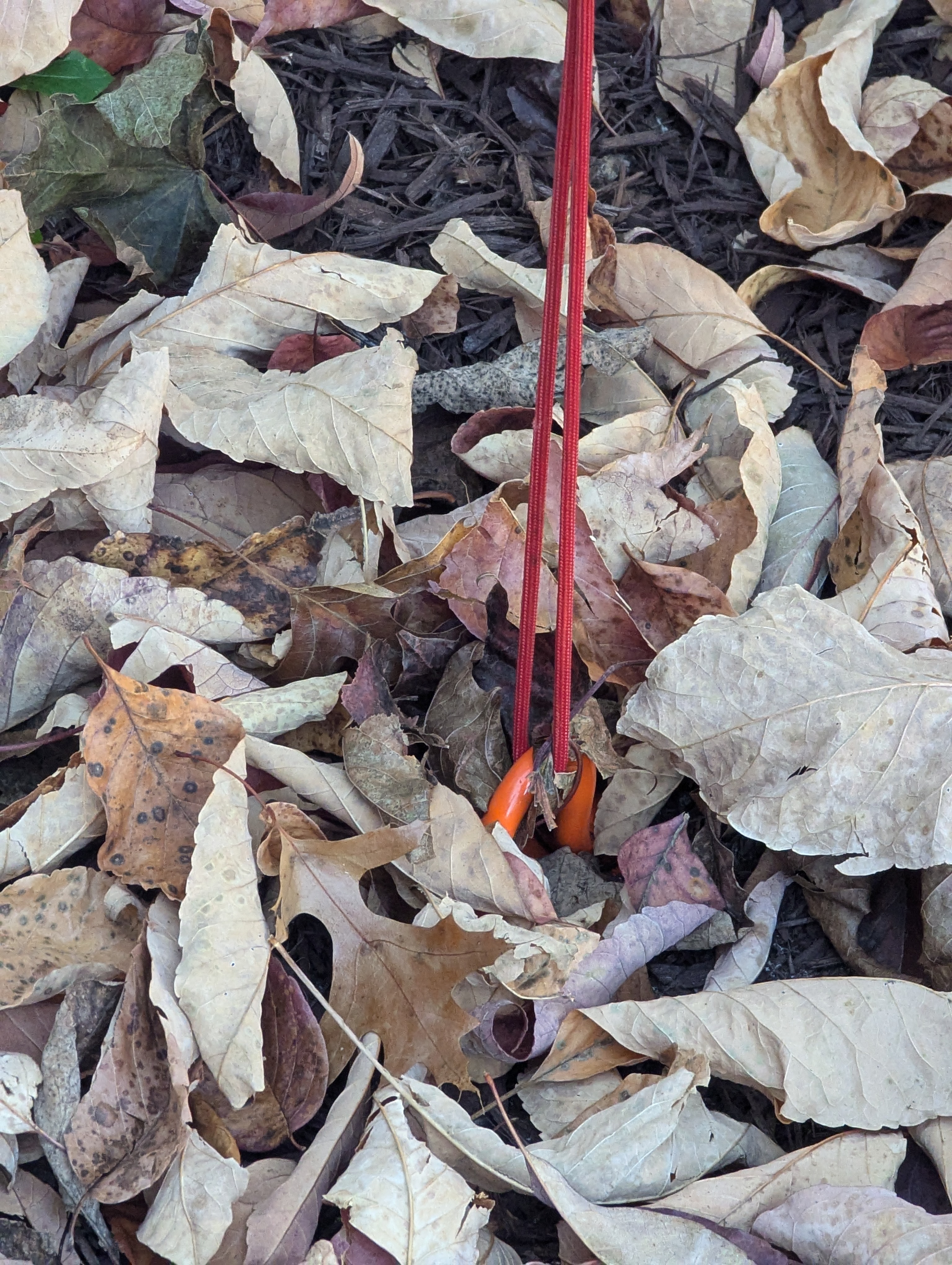The 1/4-wave ground plane antenna in the tree dropped its feedline, so I brought it down to reattach it and resolder the radials.
I also walked down the yagi on the pole to straighten some elements, since it was a nice day. The yagi was spinning around in the wind, so I also changed the way it’s mounted to clamp it more securely.
I also added some reigns to the mast, so I can (try to) spin it from inside the window. It works well some times but not others. The pole can freeze to the ground.
